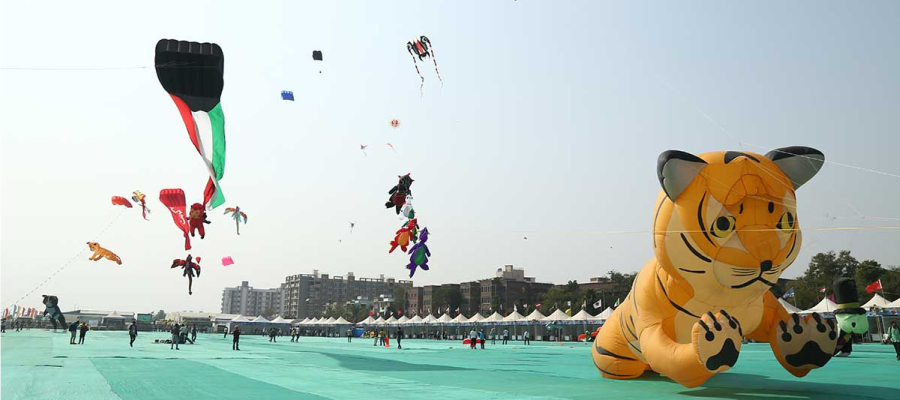The International Kite Festival, celebrated during Uttarayan in Gujarat, is a unique cultural spectacle that transforms the skies into a kaleidoscope of colors and patterns. Uttarayan, also known as Makar Sankranti, marks the sun’s transition into the Capricorn zodiac, signaling the end of winter and the arrival of longer, warmer days. For the people of Gujarat, this festival is not just a seasonal change but a vibrant celebration of life, community, and tradition.
During this time, the entire state comes alive as people of all ages take to their rooftops, eager to participate in the joyous activity of kite flying. The air buzzes with excitement from dawn until dusk, filled with the fluttering of countless kites in all shapes, sizes, and colors. The festival is not merely about flying kites; it’s about competition, camaraderie, and the thrill of the chase. Participants engage in friendly duels, attempting to cut their opponents’ kite strings using specially crafted, sharp, glass-coated lines known as “manjha.” The victorious shout “Kai Po Che!” as they triumphantly cut a rival’s kite loose, a phrase that has become synonymous with the spirit of the festival.
In Ahmedabad, the heart of this celebration, the International Kite Festival has become a marquee event since its inception in 1989. This festival attracts master kite makers and flyers from across the globe, who converge on the city to showcase their extraordinary creations. These kites are often massive and intricately designed, ranging from traditional Indian patterns to more contemporary and whimsical designs inspired by global cultures. The event serves as a melting pot of traditions, where the art of kite making and flying transcends borders and unites people from different walks of life.
The kites themselves are masterpieces, often handcrafted with meticulous care by skilled artisans. Traditional kites are made using robust bamboo frames and lightweight paper, ensuring they are both durable and capable of graceful flight. In recent years, kites have evolved to include innovative designs and materials, allowing for greater creativity and complexity. Some kites are as large as buildings, while others are intricately detailed, resembling animals, mythical creatures, or even famous personalities. The sky during Uttarayan becomes a living gallery of art, with each kite telling its own story.
Accompanying the visual feast in the sky is a culinary celebration on the ground. The festival is incomplete without indulging in traditional Gujarati delicacies like undhiyu (a mixed vegetable dish), jalebi (sweet, syrupy spirals), and chikki (a brittle made of nuts and jaggery). These dishes, prepared with seasonal ingredients, add to the festive spirit, providing energy and warmth to kite enthusiasts who spend hours under the sun.
Beyond the excitement of the competition and the beauty of the kites, the festival fosters a deep sense of community. Families and friends gather on terraces, music fills the air, and the laughter of children resonates throughout the day. It is a time of togetherness, where the simple act of flying a kite becomes a shared experience, binding people in joy and tradition.
For travelers, experiencing the International Kite Festival is an immersion into the rich cultural tapestry of Gujarat. It offers a unique blend of artistry, tradition, and festivity, providing a glimpse into the heart of Indian culture. Whether you’re an avid kite flyer or a spectator, the festival promises an unforgettable experience, one that celebrates the joy of flight, the beauty of tradition, and the warmth of community.


